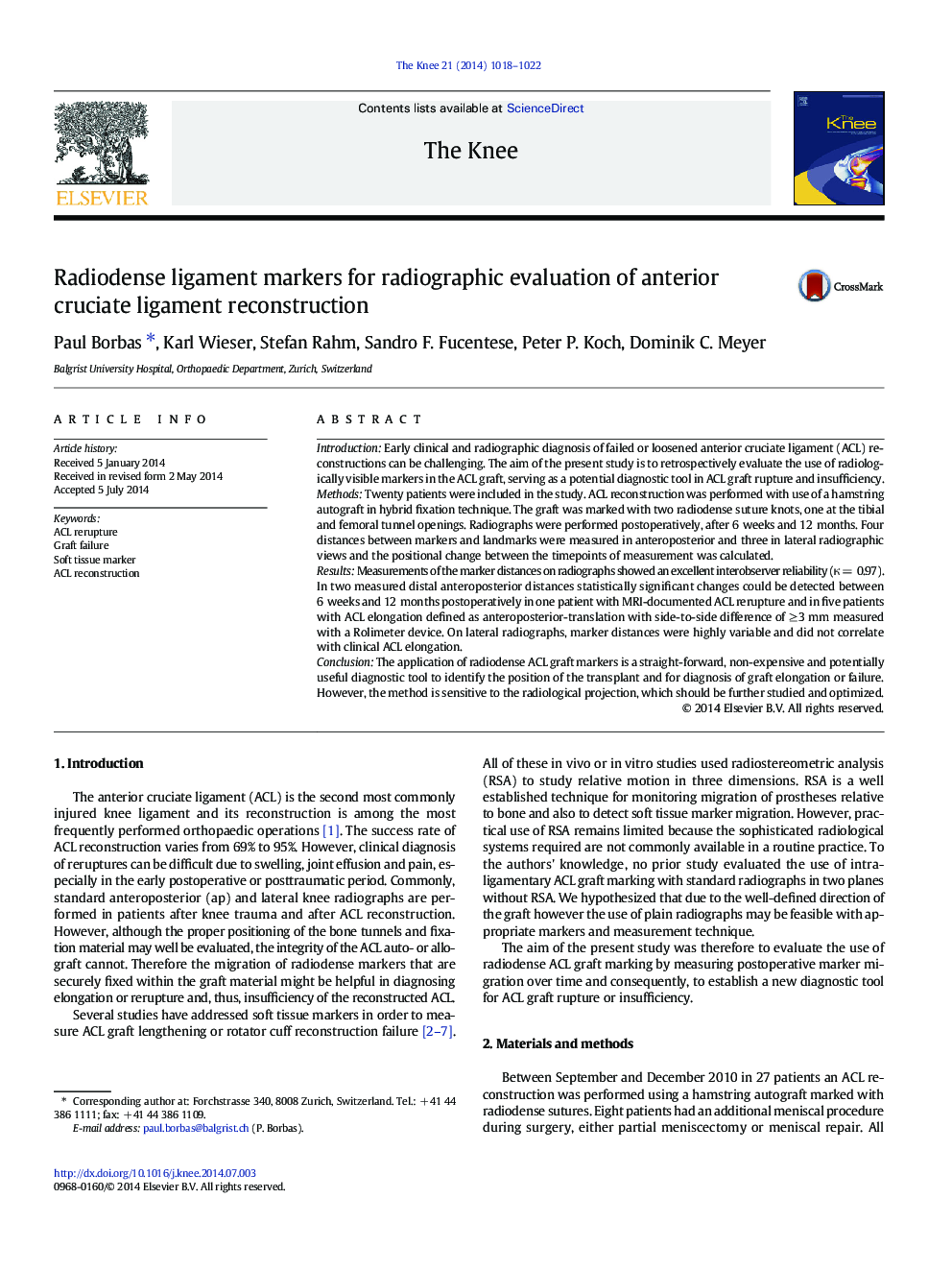| Article ID | Journal | Published Year | Pages | File Type |
|---|---|---|---|---|
| 6211312 | The Knee | 2014 | 5 Pages |
â¢ACL graft marking was studied as potential tool for diagnosis of graft insufficiency.â¢Measured marker distances on X-rays showed excellent interobserver reliability.â¢Two ap distances showed significant changes in patients with clinical elongation.â¢Radiodense ACL graft markers are an easy and potentially useful diagnostic tool.â¢The method has some limitations and should be further studied and optimized.
IntroductionEarly clinical and radiographic diagnosis of failed or loosened anterior cruciate ligament (ACL) reconstructions can be challenging. The aim of the present study is to retrospectively evaluate the use of radiologically visible markers in the ACL graft, serving as a potential diagnostic tool in ACL graft rupture and insufficiency.MethodsTwenty patients were included in the study. ACL reconstruction was performed with use of a hamstring autograft in hybrid fixation technique. The graft was marked with two radiodense suture knots, one at the tibial and femoral tunnel openings. Radiographs were performed postoperatively, after 6 weeks and 12 months. Four distances between markers and landmarks were measured in anteroposterior and three in lateral radiographic views and the positional change between the timepoints of measurement was calculated.ResultsMeasurements of the marker distances on radiographs showed an excellent interobserver reliability (κ = 0.97).In two measured distal anteroposterior distances statistically significant changes could be detected between 6 weeks and 12 months postoperatively in one patient with MRI-documented ACL rerupture and in five patients with ACL elongation defined as anteroposterior-translation with side-to-side difference of â¥Â 3 mm measured with a Rolimeter device. On lateral radiographs, marker distances were highly variable and did not correlate with clinical ACL elongation.ConclusionThe application of radiodense ACL graft markers is a straight-forward, non-expensive and potentially useful diagnostic tool to identify the position of the transplant and for diagnosis of graft elongation or failure. However, the method is sensitive to the radiological projection, which should be further studied and optimized.
